The giraffe gazelle, or gerenuk, is a long-necked species of antelope found in the deserts of East Africa. If it’s not obvious to you by now, their most distinguishing characteristic is their extremely long necks. They also have long and slender legs, which gives them an advantage when outrunning prey.
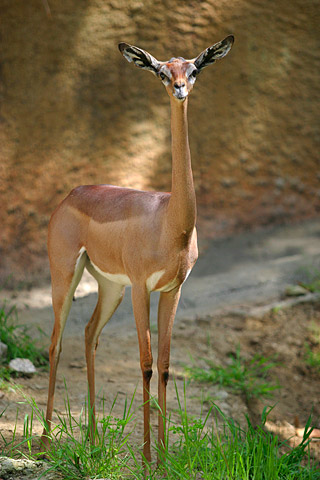
Gerenuk (Litocranius walleri)
Photo by (Photo via Aaron Logan)
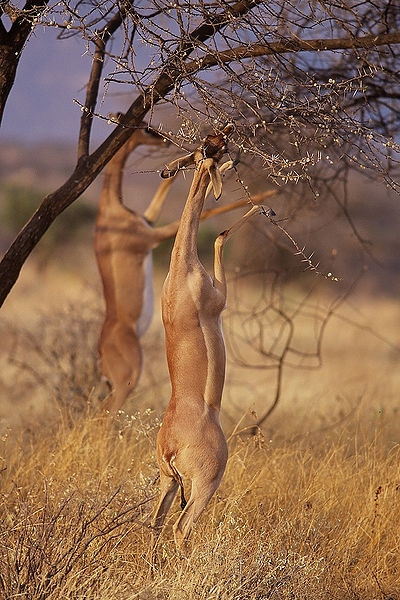
Also known as the giraffe gazelle, gerenuk comes from the Somali word 'gáránúug', which means 'giraffe-necked'.
Photo by (Photo via Frederic Salein)
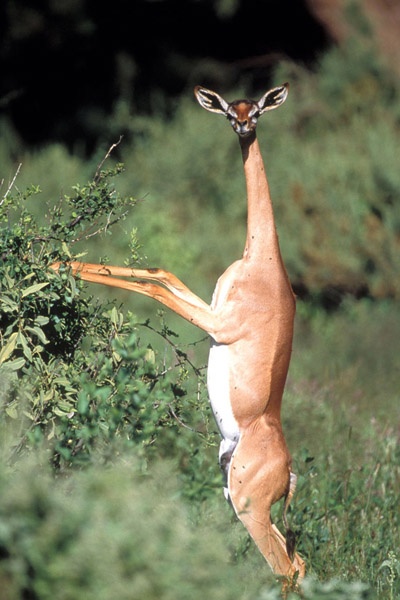
There are two subspecies, the Sclater's gazelle and the Waller's gazelle.
Photo by (Photo via noah12345678987654321)
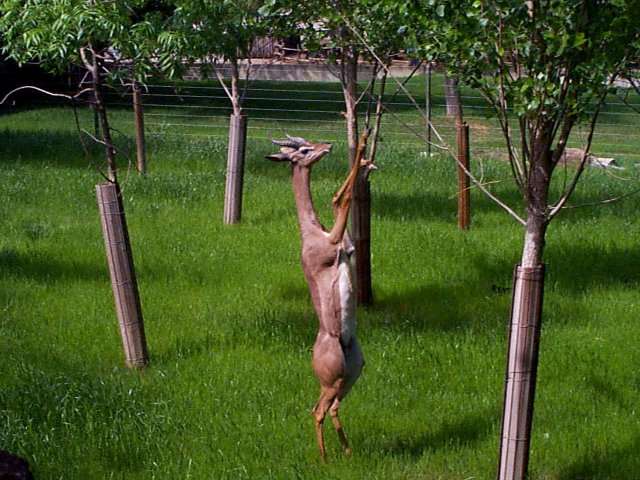
Gerenuk can be found throughout the Horn of Africa, a peninsula that comprises parts of Ethiopia, Somalia, Djibouti and Eritrea.
Photo by (Photo via Who Zoo)

These creatures are between 31-41 inches (80-105 cm) tall, and weigh between 62-115 lbs (28-52 kg).
Photo by (Photo via via noah12345678987654321)
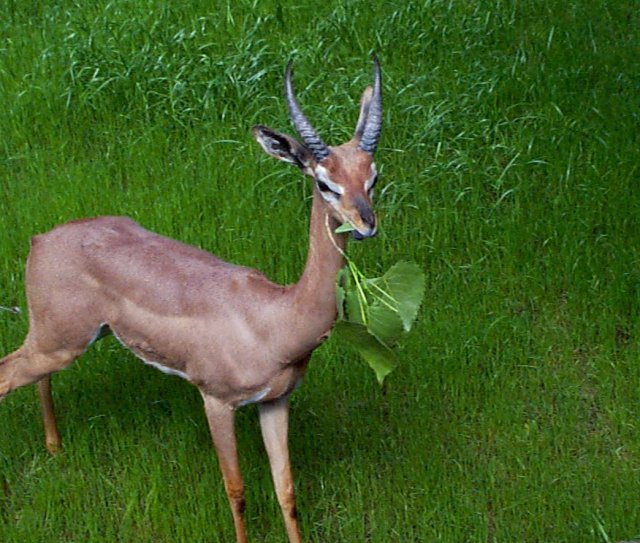
Gerenuks have a reddish-brown colouration on their backs, or the "saddle".
Photo by (Photo via Who Zoo)
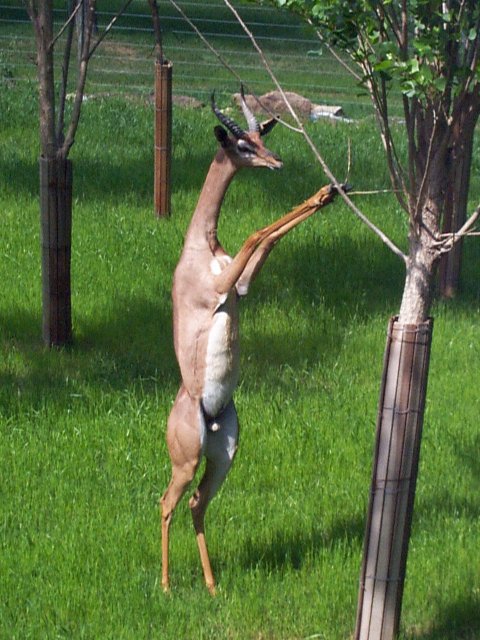
Male gerenuks have horns, which can grow up to 17 inches (44 cm) tall.
Photo by (Photo via Who Zoo)
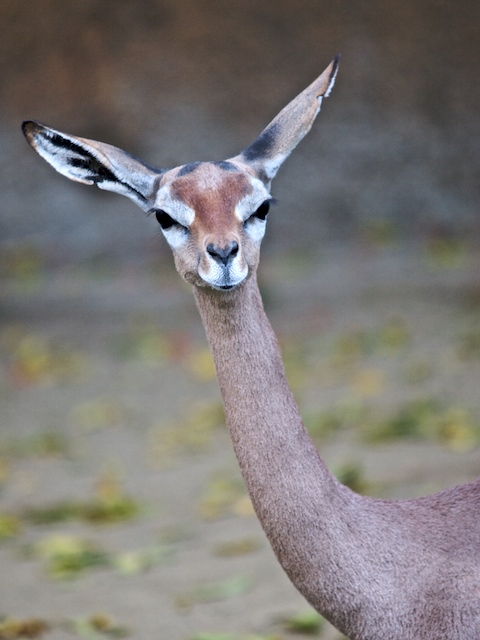
The most distinguishing characteristic is the animal's long slender neck, which resembles that of a giraffe.
Photo by (Photo via Old Dog Photo)
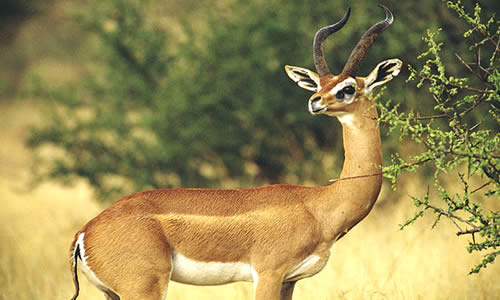
These animals are mainly active during the daytime...
Photo by (Photo via Animal Corner)
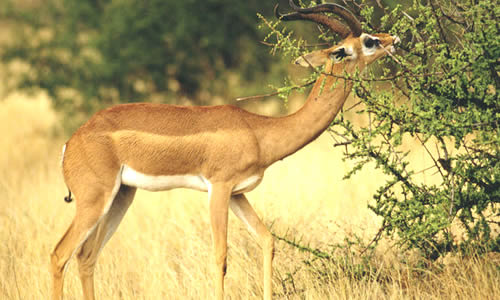
...which they spend foraging and feeding.
Photo by (Photo via Animal Corner)
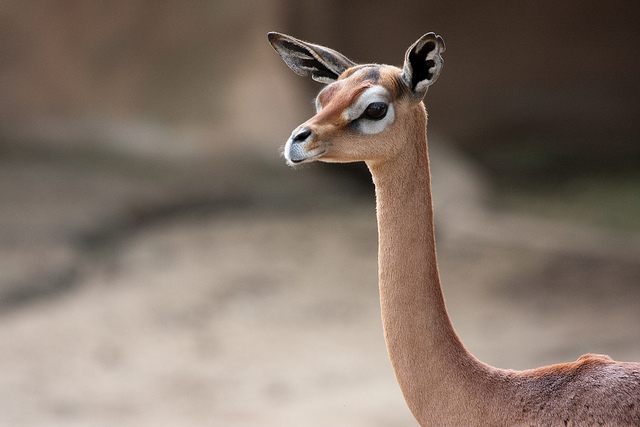
Gerenuks primarily feed on bushes, trees, shoots, flowers, fruit and herbs.
Photo by (Photo via Nathan In San Diego)
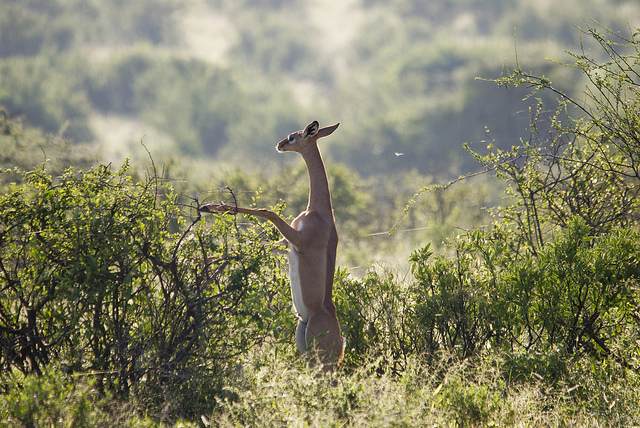
They will stand on their hind legs in order to reach for the higher twigs and leaves on plants.
Photo by (Photo via rdavek)
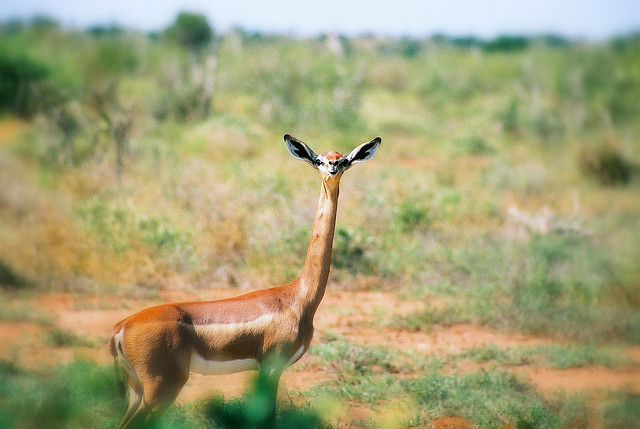
Gerenuks have a pointed mouth, which allows them to easily extract leaves from thorny vegetation.
Photo by (Photo via Clarissa Hughes)
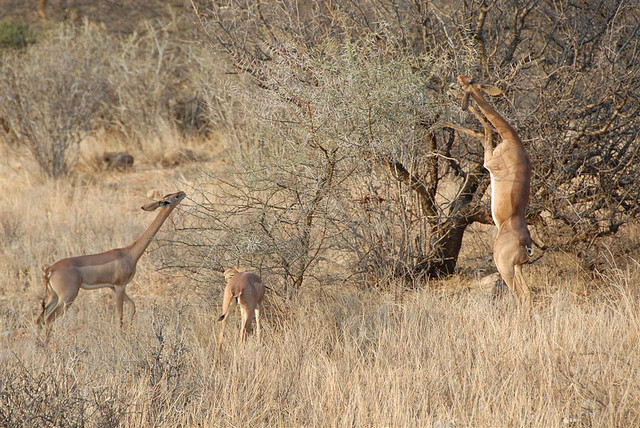
Gerenuks live in small herds, from 2 to 6 members.
Photo by (Photo via Sally London)
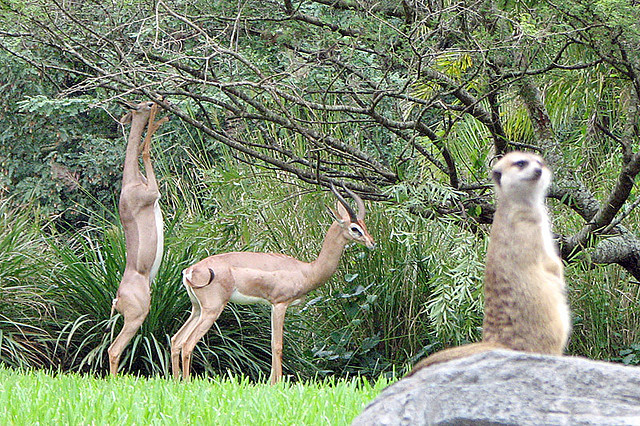
These herds are divided by sex, though baby males will stick by their mother's side in the female herd.
Photo by (Photo via goldyohio)
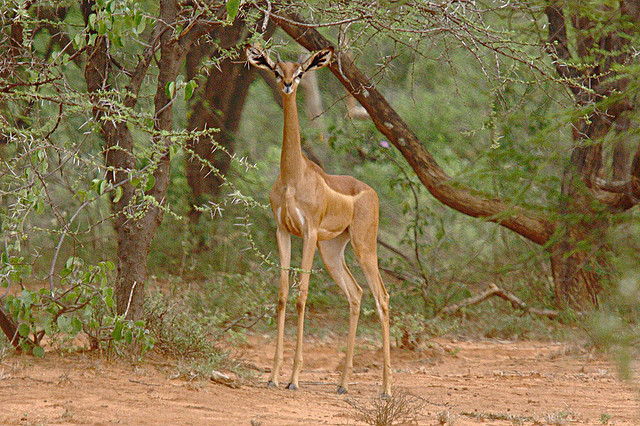
Some males prefer to keep to themselves, opting for a solitary life.
Photo by (Photo via nemtos)
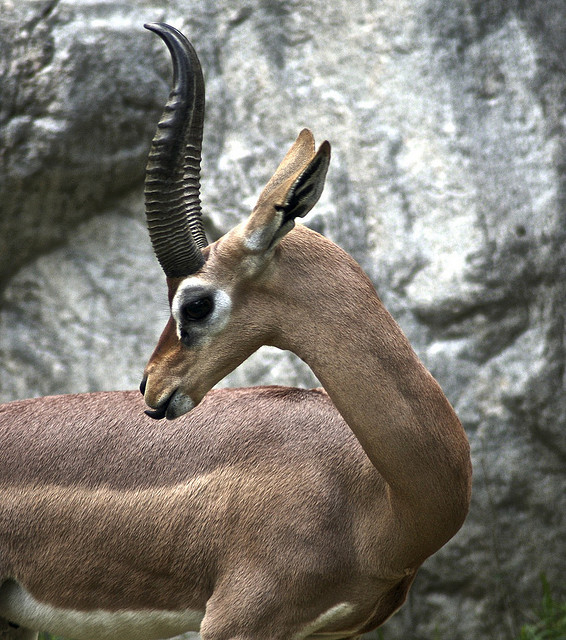
Both herds maintain territories of around 3–6 square kilometres (1.2–2.3 square miles) in range.
Photo by (Photo via Just Chaos)
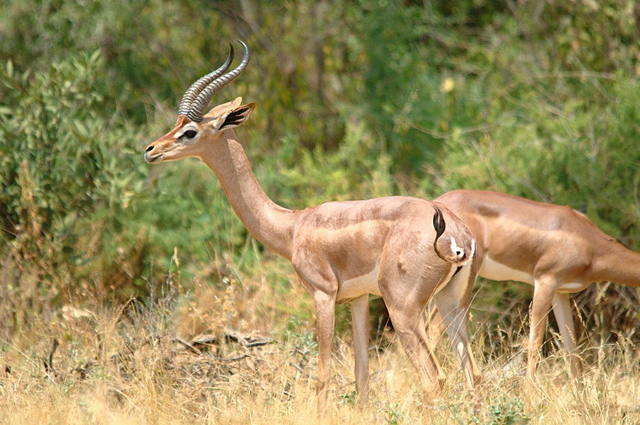
Traveling and fighting are not common among gerenuks.
Photo by (Photo via yeliseev)
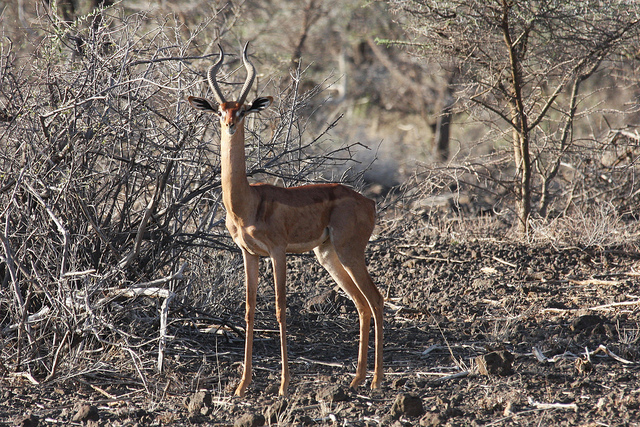
These beautiful animals do have to be wary of predators, such as cheetahs, hyenas, leopards, lions and Cape hunting dogs.
Photo by (Photo via hpear3)
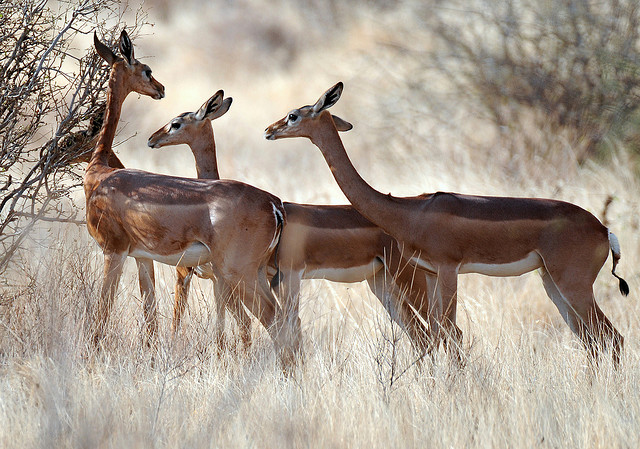
Gerenuks reproduce throughout the year, with both sexes reaching sexual maturity around the age of one.
Photo by (Photo via vidyo)
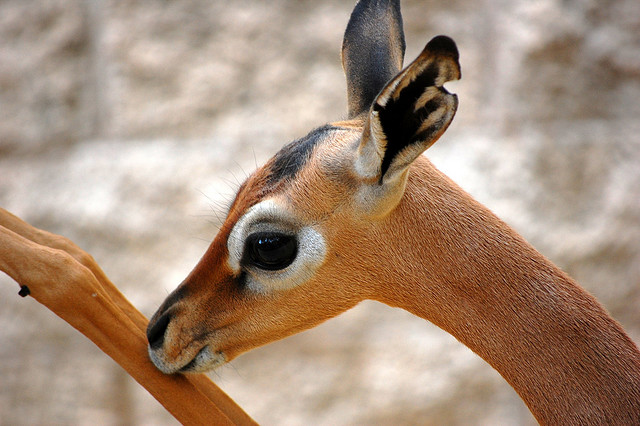
After a seven-month gestation period, females give birth to a single offspring.
Photo by (Photo via octopushat)
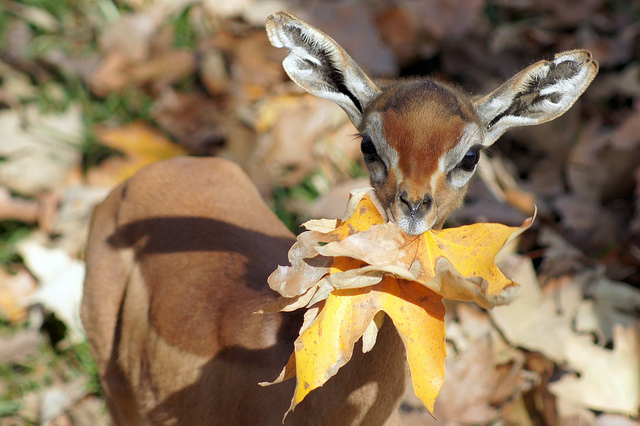
A newborn gerenuk weighs about 6.6 lbs (3 kg).
Photo by (Photo via cynr)
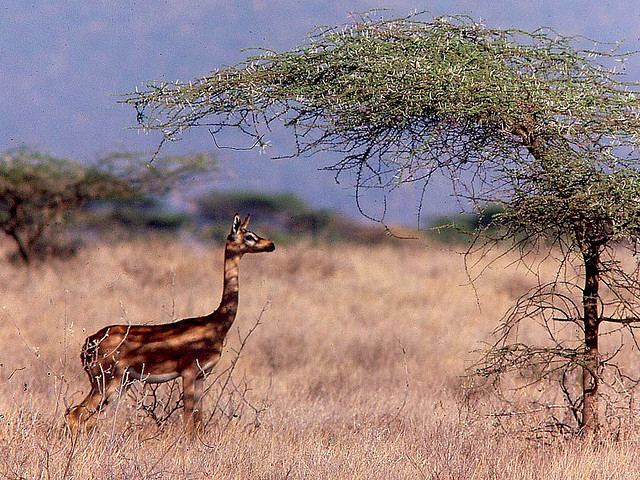
For the first few weeks, baby gerenuks will remain hidden in the bush while its mother feeds.
Photo by (Photo via davidbygott)
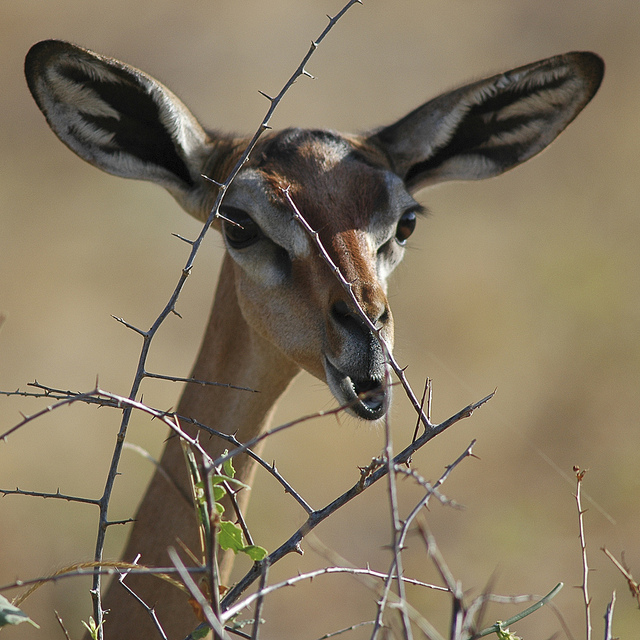
Gerenuks are vocal animals, producing a buzzing-like noise when alarmed, a whistle when they're annoyed, and a bleat when in danger.
Photo by (Photo via Frederic Salein)
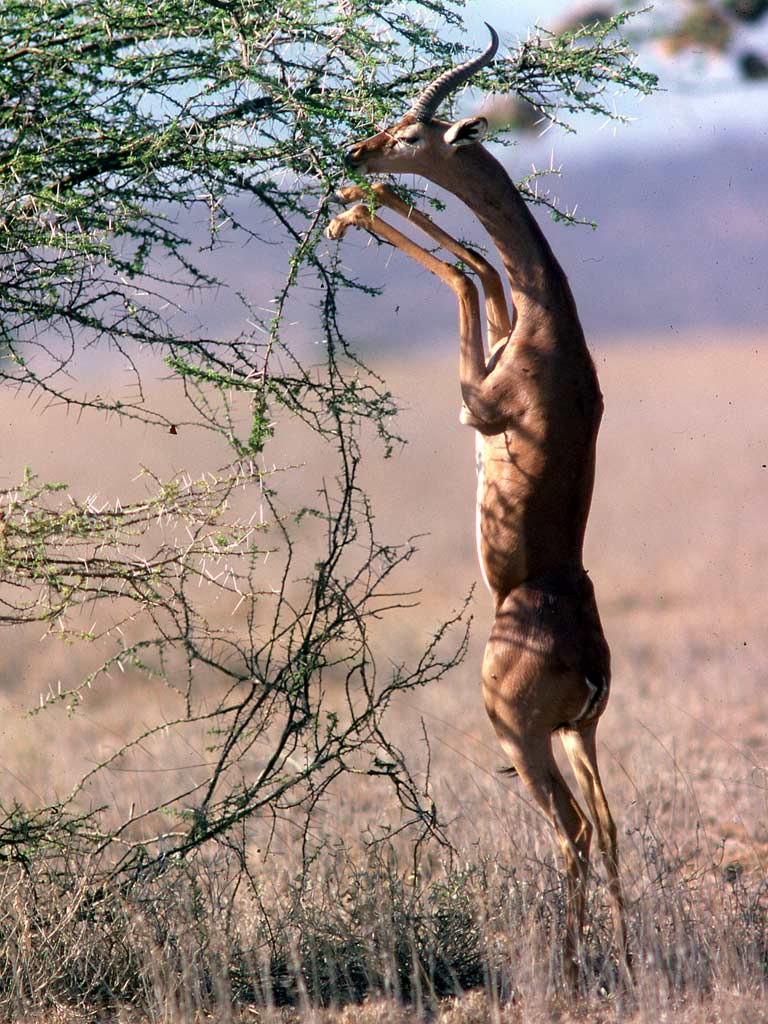
Expansion of human settlements, roads and agriculture has sadly interferred with the gerenuk's ability to find food, shelter and mates.
Photo by (Photo via davidbygott)
25 facts about the giraffe gazelle you probably didn’t know
By Geoff May
